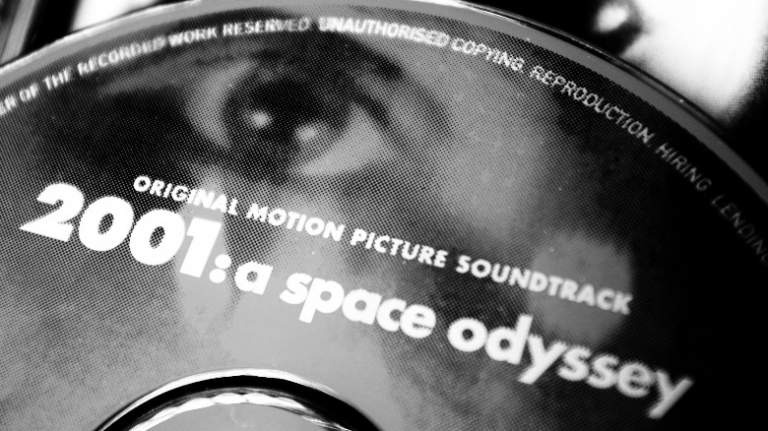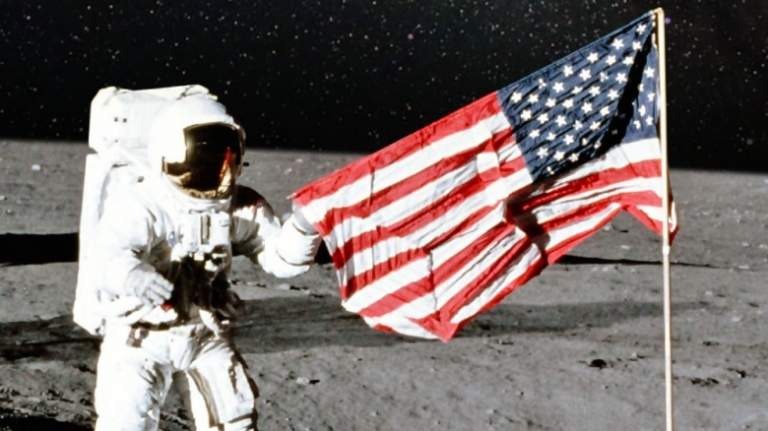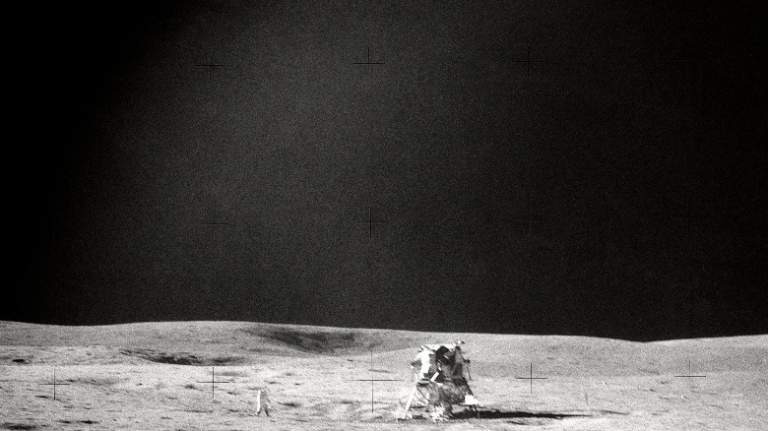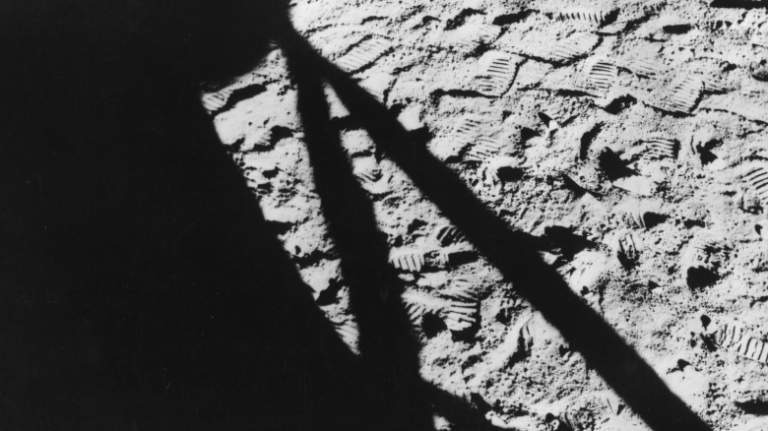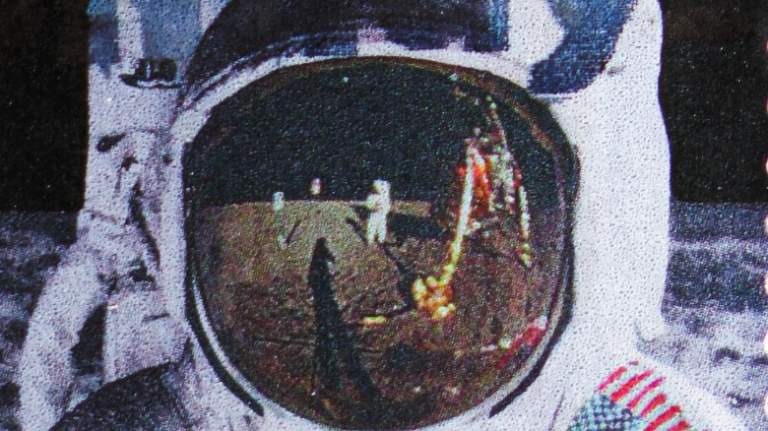The 5 Most Bizarre Moon Landing Myths We've Encountered
Humankind landing on the Earth's moon was the pinnacle of scientific and engineering achievement in the 20th century. Who could have imagined that the looming gray orb that hangs over our night sky would ever have people walking on its surface? Getting there and back safely took the hard work and dedication of thousands of physicists, engineers, politicians, astronauts, and civil servants, each of whom worked countless hours in making such a feat possible.
When Neil Armstrong took his first steps on the lunar surface in 1969, it was watched by an estimated 600 million people from across the world, according to CNN. In the United States alone, it was estimated that 94% of those watching television at that moment tuned in to see this historic moment.
But if so many people worked on this project, and if that many people actually saw it happen, why has there been an active movement that has been trying to discredit what is one of humankind's biggest accomplishments? Before you read ahead, adjust that tin foil hat. Let's take a look at some of the most bizarre moon landing myths that we've been able to discover.
Stanley Kubrick produced the moon landing as a film for NASA
Here's a really strange idea. What if famed film director Stanley Kubrick helped the U.S. government fake the moon landing by directing a film of astronauts "landing" on the moon's surface?
History tells us that this theory has its roots in two places. The first is in the realistic depiction of space and the moon in Kubrick's 1968 masterpiece, "2001: A Space Odyssey." These scenes looked too much like the NASA landing in 1969 to be a coincidence, according to the conspiracy.
This crowd also points to an alleged 1999 filmed interview with Kubrick, conducted by filmmaker T. Patrick Murray. In this interview, Kubrick states that he helped the government stage the 1969 landing, though he doesn't elaborate on why he would do such a thing. The motives for this supposedly range from patriotism to receiving specialized filming equipment to getting obscene amounts of money from the government to finance future films, as The Paris Review points out.
The truth? Kubrick's 1968 blockbuster film utilized actual space engineers and astronomical artists to make 2001's lunar set look as realistic as possible. As for Murray's interview, it was conducted two months after Kubrick died in 1999. And the man purporting to be Kubrick in it looks a lot different than Kubrick did in his last public appearance in 1997. Then there's the statement from a spokesperson for Kubrick's widow who said the interview was an outright lie.
A flapping flag means it wasn't on the moon
One moon landing myth centers around the United States flag that was planted on the lunar surface by the astronauts who landed there. This conspiracy theory claims that the flag flapping in the wind indicates that it wasn't really on the moon, as there is no wind on the moon.
They're certainly correct about there not being any wind on the moon. There's no debating that. But was the flag really blowing in the breeze?
According to History, NASA wanted to achieve the best aesthetic effect possible with the U.S. flag. Knowing that a normal flag would just hang there limply after it was planted into the moon's surface, they outfit the mission with specially made flags. These flags had a horizontal rod that extended from the top of the flagpole that the top of the flag hung from. In still photos, you can see this rod, but you can also see that it looks a bit like the flag is flapping.
But the videos of the moon landing do not lie. Watching them, you can see that the "flapping" effect occurs when the astronauts are struggling to get the horizontal rod extended all the way out from the flagpole. ABC News broke down the process of preparing the flag, noting that it had a "telescoping horizontal rod" sewn in to allow it to extend as if rippling.
The lack of stars mean it was a staged landing
Another moon landing myth is that the lack of stars in any of the lunar surface photos proves that they weren't really on the moon, according to Discovery. If they were, the lack of atmosphere and low light would have made for an abundance of stars to be sparkling in the black sky, this line of thought claims.
At first, this one might give you at least a little bit of pause. After all, the sky was black and unobstructed. When we see stars here on Earth, they are best seen on clear nights during the moon's cycle when it is casting the least amount of light into our view. So, shouldn't we notice stars in these photos if they were really taken from the moon?
The reality here is that it was daytime on the moon, despite the sky being black. As you can see, the lunar surface is clearly illuminated by the light of the sun, as are the astronauts. Royal Museums points out that for the dimly lit stars in the distance to be seen on camera, it would have taken an extremely fast shutter with a small aperture. Capturing tiny dots of light in the distance when set against so much surface illumination would be impossible without just the right kind of equipment. So the stars are there, they are just very, very hard to see.
The landing was staged because the shadows are all wrong
Another myth that conspiracy theorists continue to purport is that the shadows on the moon's surface don't align with the shadows that should be cast by objects that are backlit by the sun, as noted by Daily Press. One photo in particular that they question is a shot of the ground taken by astronaut Neil Armstrong.
In it, you can clearly see two shadows; one of Armstrong himself, and another that is cast from a piece of equipment. The problem here, conspiracy theorists argue, is that the two shadows are out of line with each other when they should be parallel. Them being out of sync indicates multiple sources of light, such as stage lighting from a sound stage, and couldn't possibly be from the sun alone.
National Space Center Discovery project director Professor Anu Ojha explained this phenomenon during a 2019 lecture. "This is on the surface of the Moon, but we can reproduce this effect any time we want to on Earth," Prof Ojha explains. "You have all seen this phenomenon yourself, where, because of perspective, parallel lines appear to be non-parallel. If you are trying to reduce on to a two-dimensional plane a three-dimensional situation, you can make lines do all sorts of weird things. Artists have been using this for centuries."
Who was holding Neil Armstrong's camera?
In what seems like a real stretch, there's a myth that's been circulating that claims that the moon landing was fake because of another photo that was taken by Armstrong. The photo is a close-up shot of fellow astronaut Buzz Aldrin. In Aldrin's face shield, you can clearly see Armstrong standing some distance away, with his hands at his middle.
So if Armstrong is the one to have taken this photo, then where is his camera? There is no camera visible in his reflection, so therefore he had no camera and the photo had to have been taken by someone else.
The reality is fairly simple. A camera would have been rather awkward for any of the astronauts to try to operate while wearing their spacesuits. Can you picture Armstrong bouncing on the lunar surface while trying to take photos with an Instamatic? To circumvent this problem, NASA had cameras built onto the spacesuits. The one this photo was taken with was with a camera that was mounted onto Armstrong's middle, which is exactly where his hands are in the reflection, History points out.
Why do people disregard fact for conspiracy theories?
The psychology behind why a person gets sucked into believing in conspiracy theories, even when presented with indisputable facts, is rather complicated. You might be inclined to believe that the majority of people who subscribe to these myths are unintelligent. But that's simply not the case. Many who hold fast to bizarre theories that science and reason have debunked are of above-average intelligence and have formal education beyond high school, according to The Guardian.
Social psychologist Marta Marchlewska speaks of the brain's use of "cognitive shortcuts" to determine what we should believe. Those who fall prey to conspiracy theories have brains that take faster shortcuts. Her reasoning for this is that some of us make decisions and form opinions based on stress, anxiety, trauma, and a myriad of other sets of circumstances. In her research, she was able to determine that those who believe in such nonsense tend to have a lack of functional relationships with other people, have personal insecurities about their relationships with others, and have a looming sense of being isolated.
Whatever the rationale behind otherwise intelligent people believing in nonsense is, the disinformation that is out there seems to be growing with the availability of the internet. As quickly as it has become to pass information from person to person, the ability to pass along myths has grown with it in tandem. Here's to the power of science and recorded history to uphold the truth.

